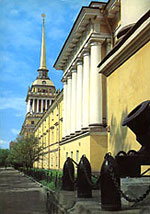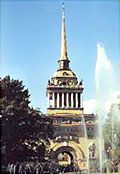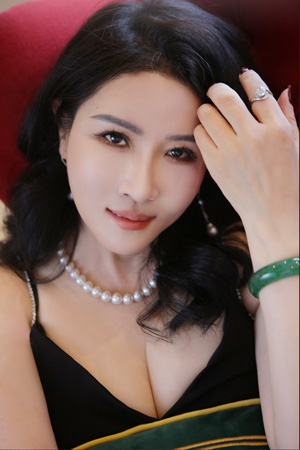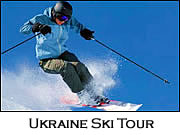The Admiralty
 After the fortifications of the Peter and Paul Fortress had been erected in 1703, yet another defensive outpost of the city was set up in the estuary of the Neva.
The building was a shipyard, which later became known as the Admiralty. As a fortress, the Admiralty played an important part in the subsequent building up of the city center.
After the fortifications of the Peter and Paul Fortress had been erected in 1703, yet another defensive outpost of the city was set up in the estuary of the Neva.
The building was a shipyard, which later became known as the Admiralty. As a fortress, the Admiralty played an important part in the subsequent building up of the city center.
According to the rules of military engineering of that time, it was prohibited to build up the area around a fortress so that the enemy could not approach its walls under cover of the adjacent buildings.
Therefore, no buildings were constructed in the area adjacent to the Admiralty.
This explains why the expanses of the Palace Square and Decembrists Square have remained open, as has Admiralty Square (with its garden laid out in the 1870s). It is now named after the writer Maxim Gorky.
In November 1705, an earthen fortress was built on the site of the future Admiralty.
The fortress was repeatedly reconstructed. The present structures were replaced with stone ones and the stone ones were rebuilt in their turn.
In 1738, the main building was rebuilt according to the design of the architect Ivan Korobov and a tower was raised, crowned with a golden spire.
At the beginning of the 19th century, a decision was made to rebuild the Admiralty yet again. The architect Andreyan Zakharov was commissioned to do the job.
It took from 1806 to 1823 to construct the modern building of the Admiralty. The cubic tower above the building dominates the architecture of the squares adjacent to the Admiralty.
It can be seen in the distance along the three thoroughfares which converge on it. The main facade is 407 m wide and is divided into six and twelve column porticos.

Zakharov retained the former plan of the building including the old spire with a weather-vane shaped like a caravel, which rose above the city to a height of 72.5 m.
It is cut from gilded sheets of brass, is 192cm long, 158cm high and weighs 65kg.
The building is decorated with 56 large sculptures, 11 reliefs, and 350 moulded ornamentations by eminent Russian sculptors of that time. The sculptures on the facade are based on a common theme-the glory of the Russian Navy.
A high relief above the archway of the main entrance, devoted to the founding of the Russian Navy by Peter the Great, depicts the god of the sea, Neptune, handing over to Peter his trident, the symbol of his power over the sea.
Standing next to the tsar is the goddess of wisdom, Minerva (who is appealing to Russia), as a young woman sitting under a bay-tree. Russia is resting on the club of Hercules (the symbol of strength) and holds the horn of plenty which is touched by the god of commerce.
Mercury is landing on bales of goods.
Above this high relief, at the corners of the lower cube of the tower stand the military leaders and heroes of antiquity: Achilles, Ajax, Pyrrhus and Alexander the Great.
 The colonnade of the tower's upper cube is decorated with 28 statues (corresponding to the number of columns). They depict the four elements (Fire, Water, Air and Earth), the four seasons of the year, the four winds (South, North, East and West) and the mythological patrons of shipbuilding and astronomy (the goddesses Isis and Urania). Each subject is repeated twice.
The colonnade of the tower's upper cube is decorated with 28 statues (corresponding to the number of columns). They depict the four elements (Fire, Water, Air and Earth), the four seasons of the year, the four winds (South, North, East and West) and the mythological patrons of shipbuilding and astronomy (the goddesses Isis and Urania). Each subject is repeated twice.
Two monumental groups 11 m high have been erected along either side of the archway of the main entrance. Each of them, depicting three nymphs, symbolizes the mythological goddess Hecate, who personified water, the earth, and the sky.
On the pediments of the side porticos there are high reliefs of "The goddess of justice Themis, blessing labor" (to the right of the tower), "Themis giving rewards for feats in battle and at sea" (to the left of the tower), "Glory blessing military feats" (on the Decembrists' Square side) and "Glory crowning the sciences with laurels" (on the Palace Square side).
Eminent sculptors in Russia at the time, such as Feodosy Shchedrin, Stepan Pimenov, Ivan Terebenev, and Vasily Demut-Malinovsky, contributed their works to the Admiralty.

























